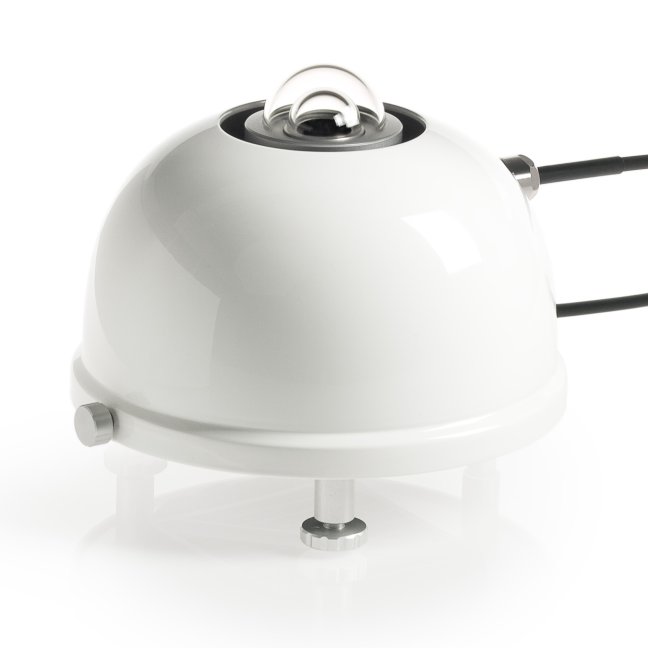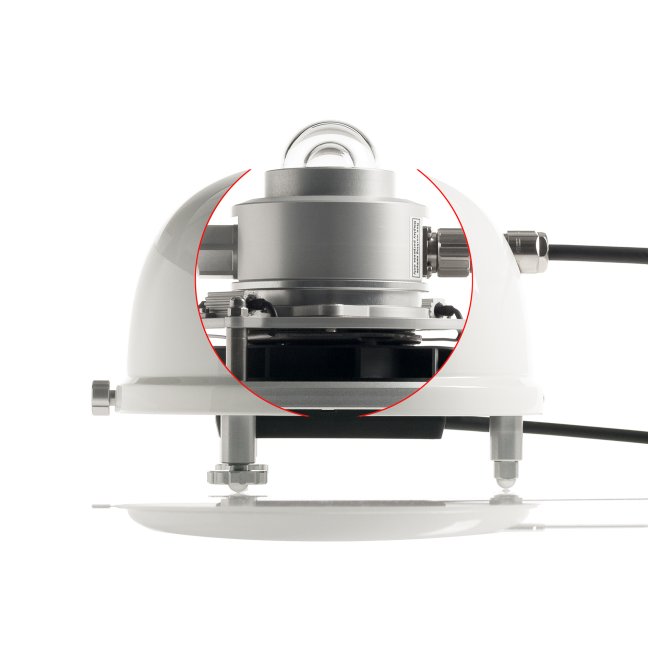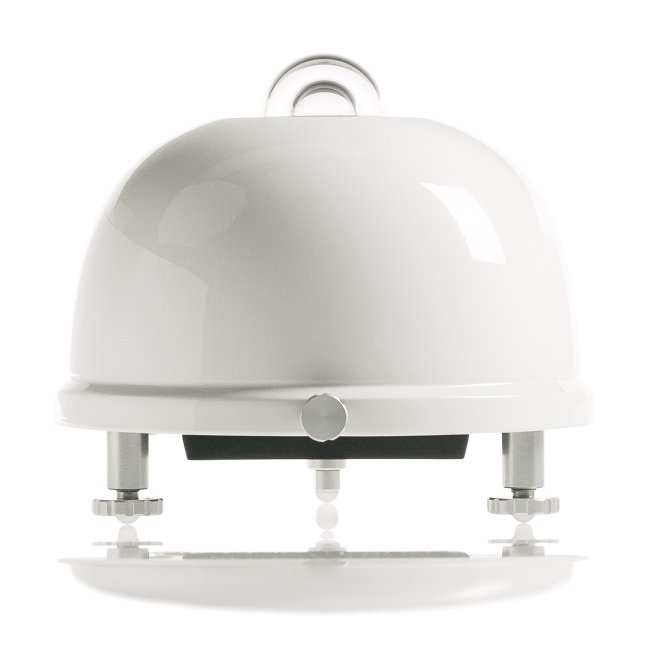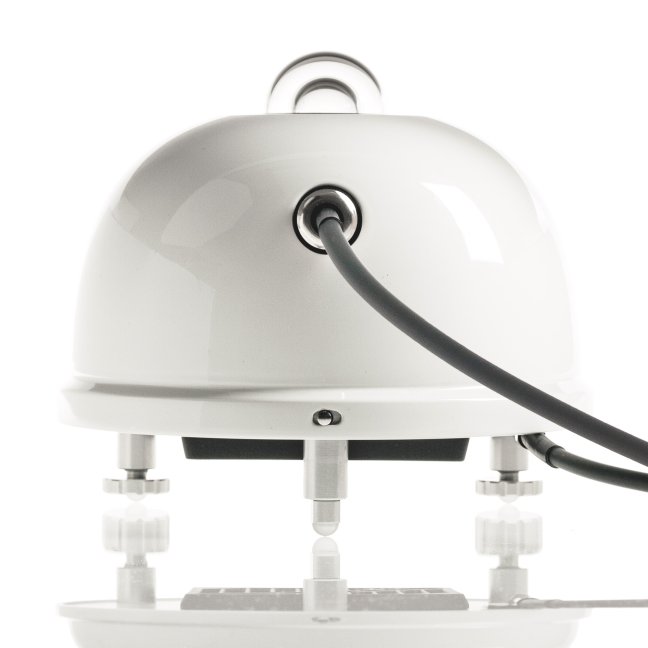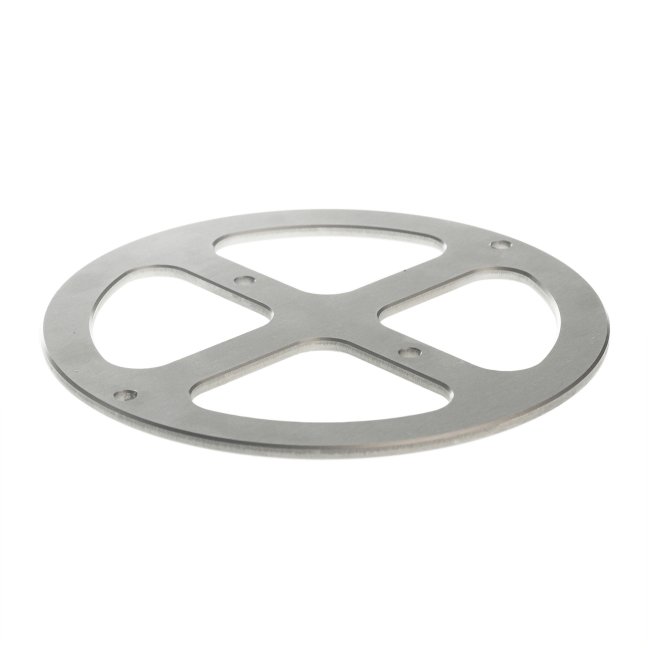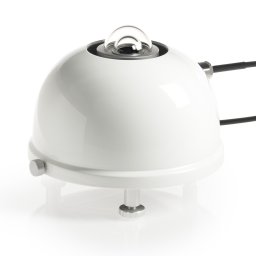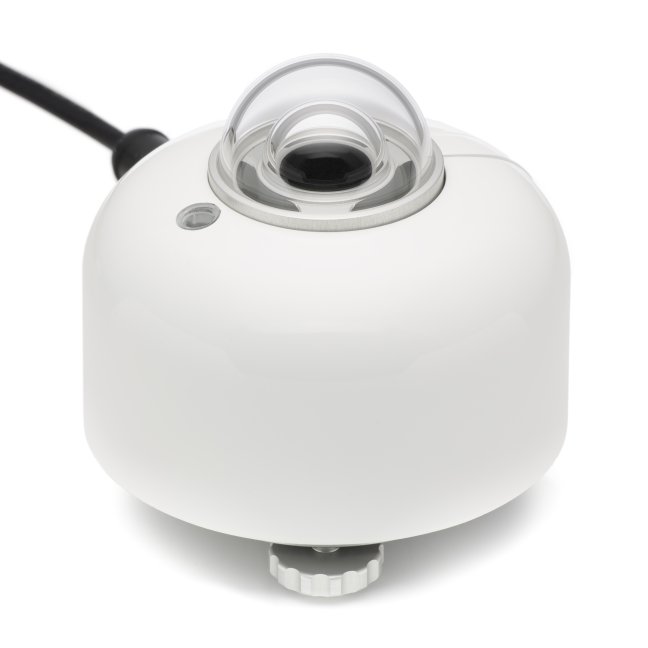A pyranometer measures the solar radiation received by a plane surface from a 180 ° field of view angle. This quantity, expressed in W/m², is called “hemispherical” solar radiation. The solar radiation spectrum extends roughly from 285 to 3000 x 10⁻⁹ m. By definition a pyranometer should cover that spectral range with a spectral selectivity that is as “flat” as possible.
In an irradiance measurement by definition the response to “beam” radiation varies with the cosine of the angle of incidence; i.e. it should have full response when the solar radiation hits the sensor perpendicularly (normal to the surface, sun at zenith, 0 ° angle of incidence), zero response when the sun is at the horizon (90 ° angle of incidence, 90 ° zenith angle), and 50 % of full response at 60 ° angle of incidence. A pyranometer should have a so-called “directional response” (older documents mention “cosine response”) that is as close as possible to the ideal cosine characteristic.
In order to attain the proper directional and spectral characteristics, a pyranometer's main components are:
• a thermal sensor with black coating. It has a flat spectrum covering the 200 to 50000 x 10⁻⁹ m range, and has a near-perfect directional response. The coating absorbs all solar radiation and, at the moment of absorption, converts it to heat. The heat flows through the sensor to the sensor body. The thermopile sensor generates a voltage output signal that is proportional to the solar irradiance.
• a glass dome. This dome limits the spectral range from 285 to 3000 x 10⁻⁹ m (cutting off the part above 3000 x 10⁻⁹ m), while preserving the 180 ° field of view angle. Another function of the dome is that it shields the thermopile sensor from the environment (convection, rain).
• a second (inner) glass dome: For secondary standard and first class pyranometers, two domes are used, and not one single dome. This construction provides an additional "radiation shield", resulting in a better thermal equilibrium between the sensor and inner dome, compared to using a single dome. The effect of having a second dome is a strong reduction of instrument offsets.
• a heater: in order to reduce the effect of dew deposition and frost on the outer dome surface, most advanced pyranometers have a built-in heater. The heater is coupled to the sensor body. Heating a pyranometer can generate additional irradiance offset signals, therefore it is recommended to activate the heater only during night-time. Combining a heater with external ventilation makes these heating offsets very low.








